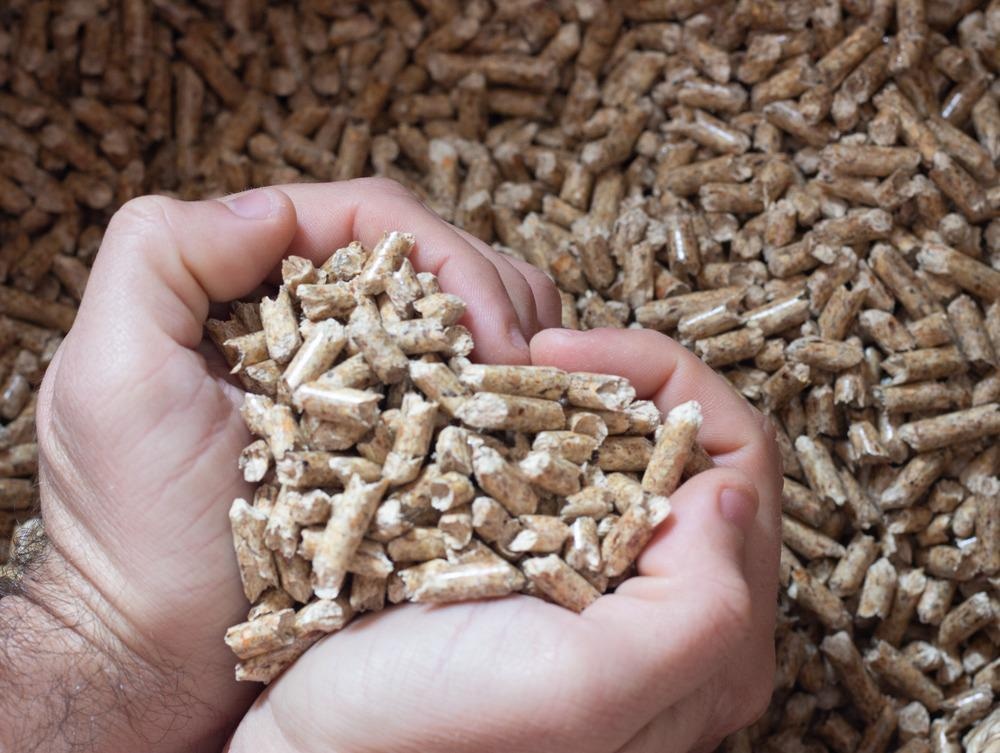A team of researchers from China and the United Kingdom has developed a novel modified molten-salt-based technique for obtaining porous carbon materials from biomass, presenting a more convenient method that can improve the commercial viability of large-scale biomass-based processes. Their paper is currently in the pre-proof stage of publication in the journal Electrochimica Acta.

Study: Simplified attainment of porous carbon materials from nature's gifts. Image Credit: Slothandhippo/Shutterstock.com
Producing Carbon Materials from Biomass Sources
The ecological challenges of the 21st century have focused the attention of researchers on renewable technologies to meet the energy and industrial needs of modern society and improve the sustainability of the modern world. The urgent need to stop exploiting fossil fuels and replace them with environmentally sustainable alternatives has become overwhelmingly apparent in recent decades.
Amongst the various strategies proposed to address the challenges of anthropogenic climate change, biomass has become an attractive option for energy generation and value-added industrial products. Producing carbon materials from this organic resource has become a research focus in recent years due to the favorable properties of the materials and their inherent sustainability and circularity.
There are three critical challenges that need to be addressed for the widespread use of biomass-derived carbon materials to be realized effectively. Firstly, an inert atmosphere is needed due to limitations with both biomass and derived materials. Secondly, the high content of residual metallic ashes present in biomass unfavorably impacts performance. Thirdly, the range of applications for carbon materials is limited due to the dependency of their pore structure on raw materials.
Some strategies have been developed in recent years to overcome these limitations, including optimizing purification processes and engineering the product’s porous structures. Carbonization processes are commonly performed in gaseous nitrogen and argon atmospheres. These gases are used due to their inertness, but they are typically expensive, and the carbonization process requires the use of complex equipment.
Acids and harsh solvents are typically used to remove metallic impurities, and chemical activation and physical activation processes are used to produce materials with larger surface areas and more abundant pore structures. However, all these strategies further increase the complexity and cost of producing biomass-derived carbon materials.
More importantly, the use of complex and harsh reactions in the preparation of these materials has a deleterious effect on their macroscopic morphology. This severely limits the production of commercially viable carbon products from biomass. The search for strategies that overcome these issues is a key research focus currently.
Utilizing molten salt to produce carbon materials from biomass is a potential strategy that overcomes the challenges with conventional methods for the synthesis of these materials. Exploring this research question is the focus of the new study in Electrochimica Acta.
The Study
The researchers have used a molten salt strategy to produce valuable carbon materials from biomass sources. Rice-paper plant was used as the specific precursor biomass material in the research. The technique is a one-step carbonization process that can produce value-added carbon materials without the need for inert gases, which otherwise increases the synthesis costs. Moreover, the process does not need acid etching, activation steps, or the use of harsh reaction conditions.
Molten salt techniques are attractive due to their low synthesis temperature, favorable flux environment, low vapor pressure, low oxygen/water solubility, and strong dissolving capacity for inorganic components such as metal oxides and ions. Using molten salt holds great promise for facilitating the easier production of carbon materials from biomass.
The research highlighted the role of molten salts in dissolving the metallic impurities in biomass, which forms large particles which then agglomerate onto the surface of carbon materials. These agglomerated particles can then be removed using ultrasonic treatment.
To further demonstrate the practical applications of the prepared biomass-derived carbon materials, the authors prepared lithium-ion batteries and supercapacitors which utilized the materials. The results of these experiments demonstrated the superior performance of the prepared materials, attesting to the efficaciousness of the proposed molten salt strategy.
The authors have thoroughly investigated the entire synthesis process, and have proposed that it is an optimal choice for both research purposes and the industrial production of carbon materials from biomass. The novel synthesis strategy presented in the research has potential for applications in other energy conversion and storage technologies such as hydrogen storage and sensors, as well as other batteries and supercapacitors besides the ones investigated in the paper.
In summary, the authors have presented key findings that will improve the cost, simplicity, and efficiency of producing value-added carbon products from biomass sources. The paper has provided a valuable contribution to the field of renewable energy harvesting and storage and provides several opportunities for future research.
More from AZoM: How is Fast Fourier Transform Used Alongside Electron Microscopy?
Further Reading
Zhang, Y et al. (2022) Simplified attainment of porous carbon materials from nature's gifts Electrochimica Acta. 140486 [online, pre-proof] sciencedirect.com. Available at: https://www.sciencedirect.com/science/article/abs/pii/S0013468622006454
Disclaimer: The views expressed here are those of the author expressed in their private capacity and do not necessarily represent the views of AZoM.com Limited T/A AZoNetwork the owner and operator of this website. This disclaimer forms part of the Terms and conditions of use of this website.